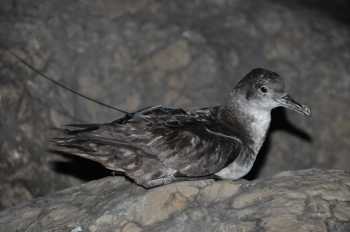The paper's abstract follows:
"In birds, species identity is one of the most important messages conveyed by vocalizations and is the basis for effective acoustic communication between conspecifics. Acoustic analyses can reveal which acoustic cues signal species identity, that is, the cues that could potentially be used by birds for species recognition, whereas playback experiments aim to determine which cues birds actually use for species recognition. Few studies have compared the acoustic cues used for species-specific recognition between closely related species and between sexes within species. We focused on three shearwater species (Puffinus yelkouan, Puffinus mauretanicus, Calonectris d. diomedea) breeding in the Mediterranean basin. In a previous study we showed that males and females of these three closely related species produce broadband calls strongly modulated in frequency and share a wide range of acoustic features signalling species identity. Here, we investigated whether these birds use similar acoustic cues for species recognition. Playback experiments showed that these cues were more similar between species of the genus Puffinus that rely mainly on frequency modulation than between Puffinus and Calonectris species, the latter using mainly frequency spectrum-related cues. In spite of similarities between the Puffinus species, we found substantial differences, P. mauretanicus being more sensitive to frequency value modification than P. yelkouan. We also found that females of the three species rely on more acoustic parameters to identify species than males. Our results show that the species-specific recognition system can show significant differences between closely related species and between sexes."

Balearic Shearwater. Photograph by Henri Weimerskirch
Reference:
Curé, C., N. Mathevon, N., Mundry, R. & Aubin, T. 2012. Acoustic cues used for species recognition can differ between sexes and sibling species: evidence in shearwaters. Animal Behaviour 84: 239-250.
John Cooper, ACAP Information Officer, 23 September 2012

 English
English  Français
Français  Español
Español